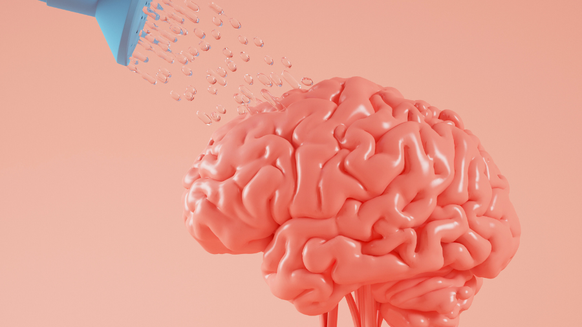
If you've been in the fitness space for a while you've probably asked yourself, what is BMR? BMR, or basal metabolic rate, is the number of calories your body needs to accomplish its basal (most basic) life-sustaining functions.
To give it its full scientific description, basal metabolic rate (BMR) is the amount of energy expended while at rest in a neutrally temperate environment. In simpler terms, the number of calories you require over a 24-hour period without the inclusion of movement of any kind or through the digestion of food.
If you’ve ever wondered what BMR accounts for, it’s the energy required to maintain vital organs such as the liver, brain, heart, lungs, kidneys as well as muscle mass and skin. Around 70% of the overall calories you require are burnt purely for the above basal processes. Another 10% are used for maintaining body temperature and digesting food. That means only 20% of the calories we require overall are burnt during movement.
- How to calculate your BMR
- Why you might want to know your BMR
- Can I eat fewer calories than my BMR?
- How do I set my calories?
How to calculate your BMR
BMR is dependent on factors such as age, height, weight, sex and lean muscle mass. You can calculate your BMR here.
To calculate your BMR, you can use the following formula:
Why you might want to know your BMR
If you’re trying to lose, gain, or maintain weight, knowing your BMR helps you to determine how many calories you need each day.
To lose weight
Losing weight means you need to burn more calories than you’re taking in. Start with your BMR and use these equations to help calculate your calorie burn to adjust your calorie intake (diet).
To maintain weight
Keeping your weight the same can also be done by knowing your BMR and an estimate of how many calories you burn through exercise. Eating the same number of calories that you burn helps maintain weight.
To gain weight
Can I eat fewer calories than my BMR?
How do I set my calories?
Remember, on a simple level, it’s all about calories in, calories out.
1. Calculate your BMR
2. Determine your calories burned through exercise
3. Add or subtract calories in your diet based on your goals
If you’re serious about getting results, you ought to be predominately lifting weights through big progressive movements such as squats, deadlifts, presses etc., whilst also feeding your body correctly, taking note of your own specific BMR and overall calorie needs.
Upping your steps and cardio activity is also a key element when you’re trying to lose weight, to increase your calorie deficit. Adding more calories and protein is key for gaining muscle.
After reading this article, you should realize that blindly cutting calories too excessively will have consequences, as mentioned above. So, always try to find what’s right for you, and consult your GP first.
If you’re looking to learn more about calculating the right calorie deficit for you, use the article below.

How To Calculate BMR & TDEE (& Why It's Important)
Adjust your targets to work for your goals....
Take home message
Interested in more expert nutrition advice?
READ THESE NEXT:

Claire is a Registered Dietitian through the Academy of Nutrition and Dietetics and a board-certified Health and Wellness Coach through the International Consortium for Health and Wellness Coaching. She has a Bachelor of Science in Biology and a Master’s degree in Clinical Dietetics and Nutrition from the University of Pittsburgh.
Talking and writing about food and fitness is at the heart of Claire’s ethos as she loves to use her experience to help others meet their health and wellness goals.
Claire is also a certified indoor cycling instructor and loves the mental and physical boost she gets from regular runs and yoga classes. When she’s not keeping fit herself, she’s cheering on her hometown’s sports teams in Pittsburgh, or cooking for her family in the kitchen.
Find out more about Claire’s experience here.
1. Alexandra M Johnstone, Sandra D Murison, Jackie S Duncan, Kellie A Rance, John R Speakman, “Factors influencing variation in basal metabolic rate include fat-free mass, fat mass, age, and circulating thyroxine but not sex, circulating leptin, or triiodothyronine”, The American Journal of Clinical Nutrition, Volume 82, Issue 5, November 2005, Pages 941–948
2. Mathisen TF, Heia J,Raustøl M, Sandeggen M, Fjellestad I, Sundgot-Borgen J. “Physical health and symptoms of relative energy deficiency in female fitness athletes.” Scand J Med Sci Sports. 2020;30(1):135-147. doi:10.1111/sms.13568








